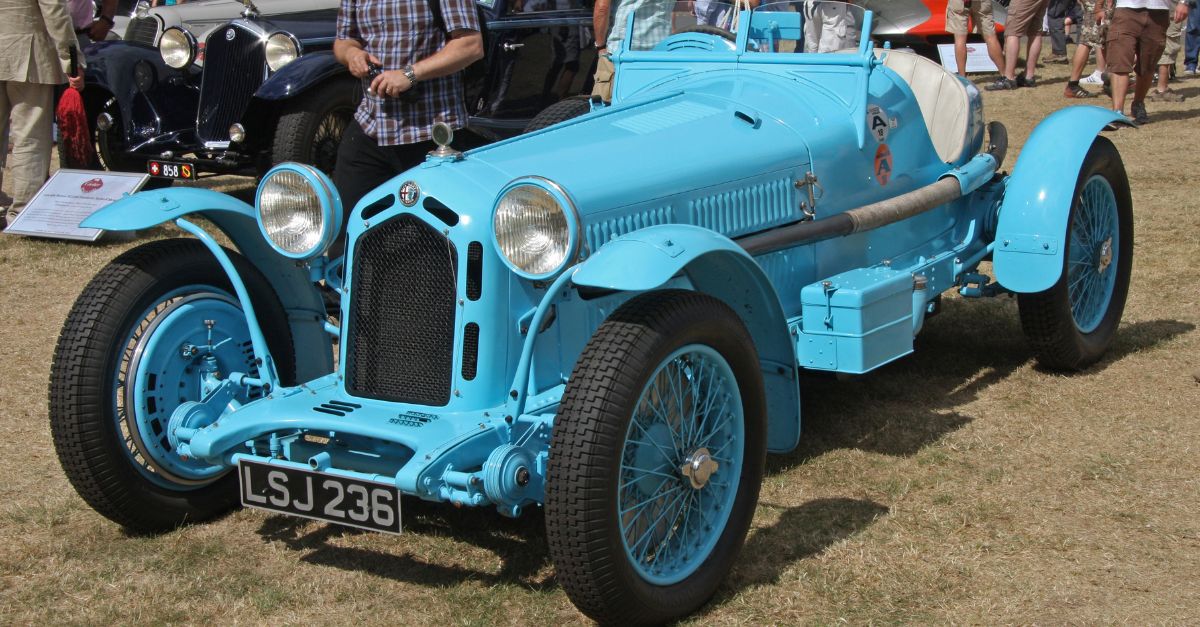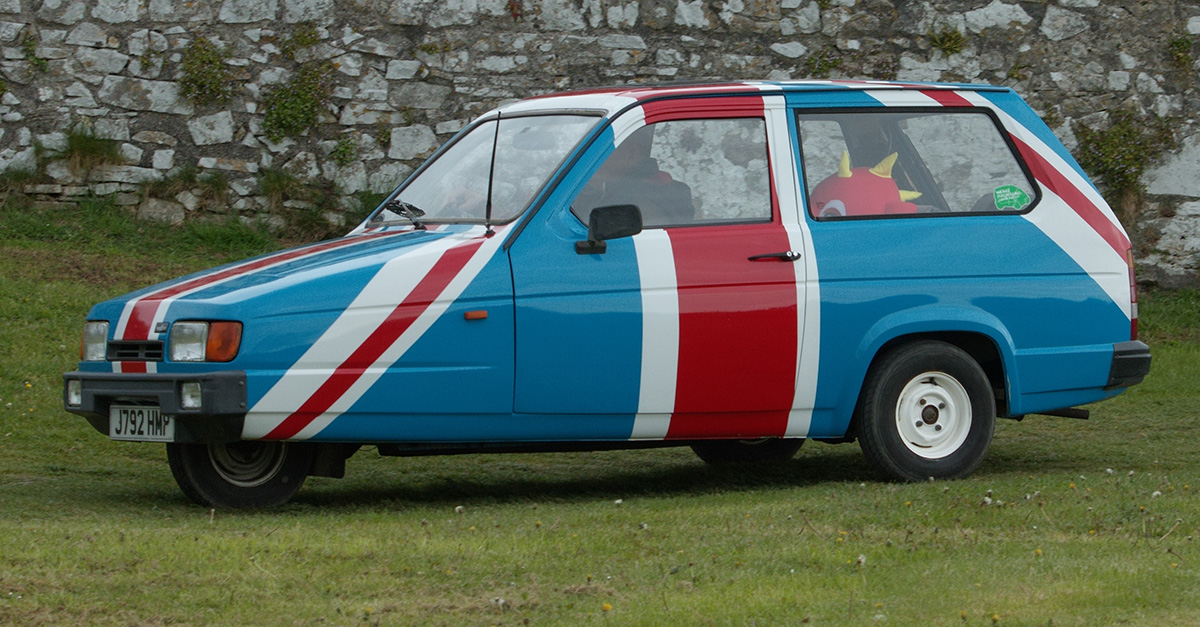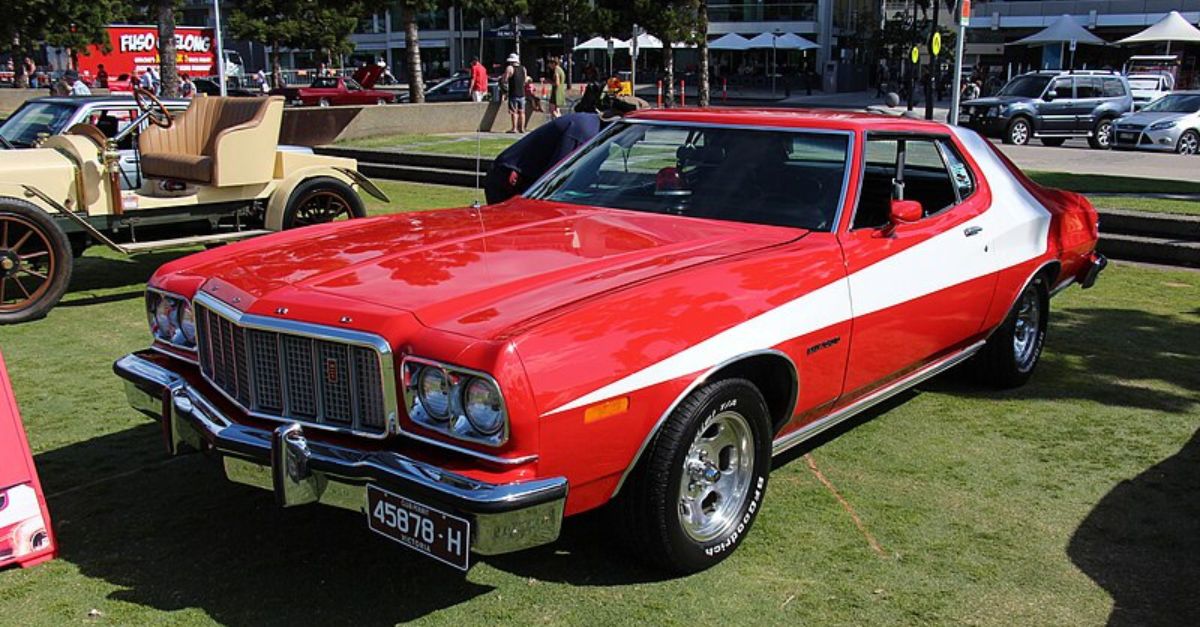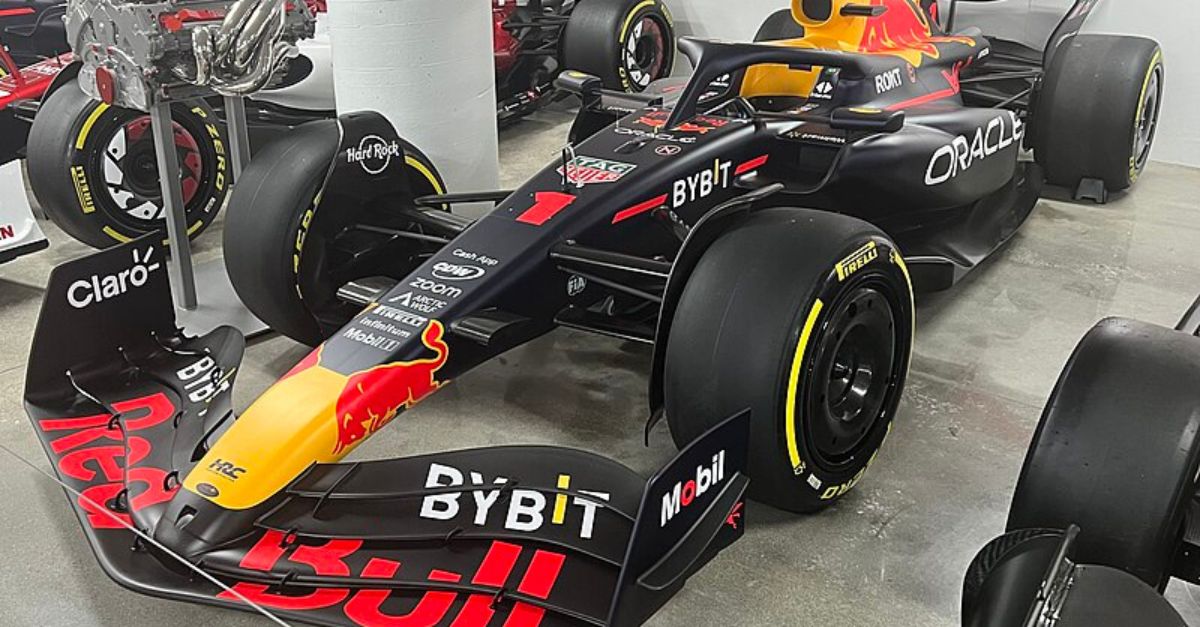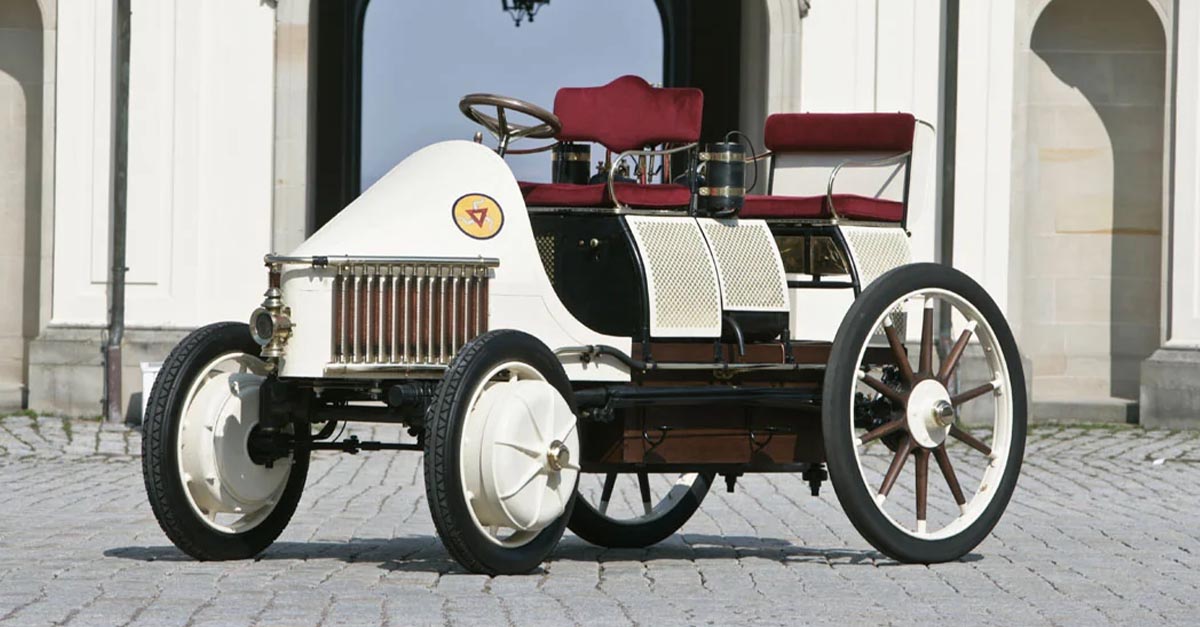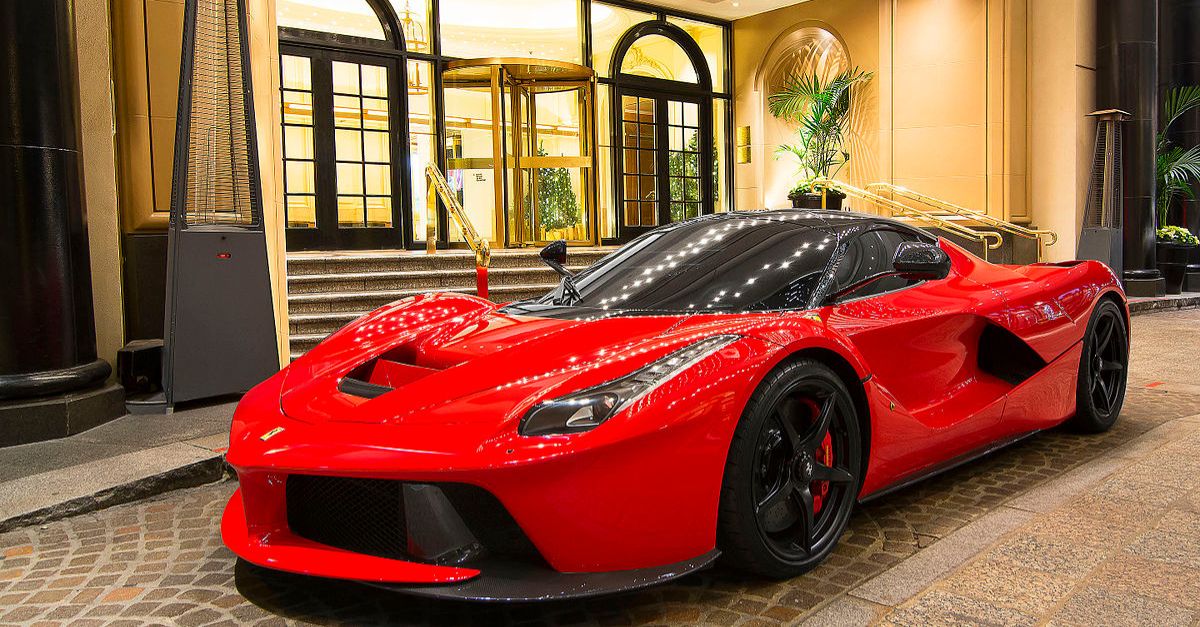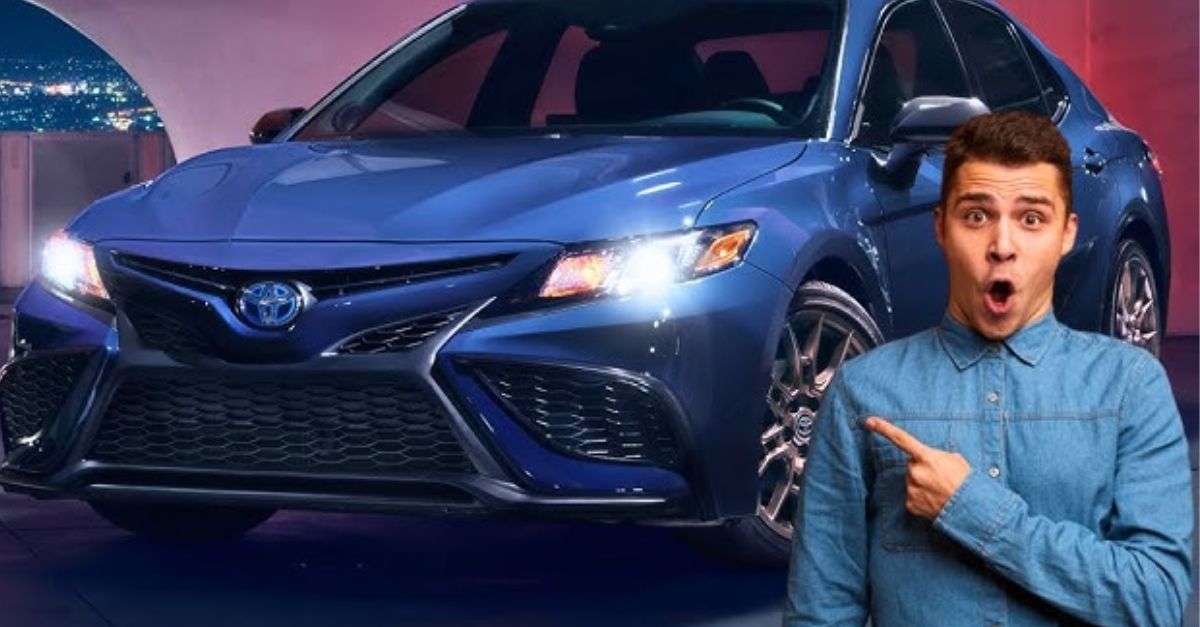Revving Up With Art Deco Style
Get ready to cruise through time with these Art Deco beauties. These cars didn't just drive; they defined style.
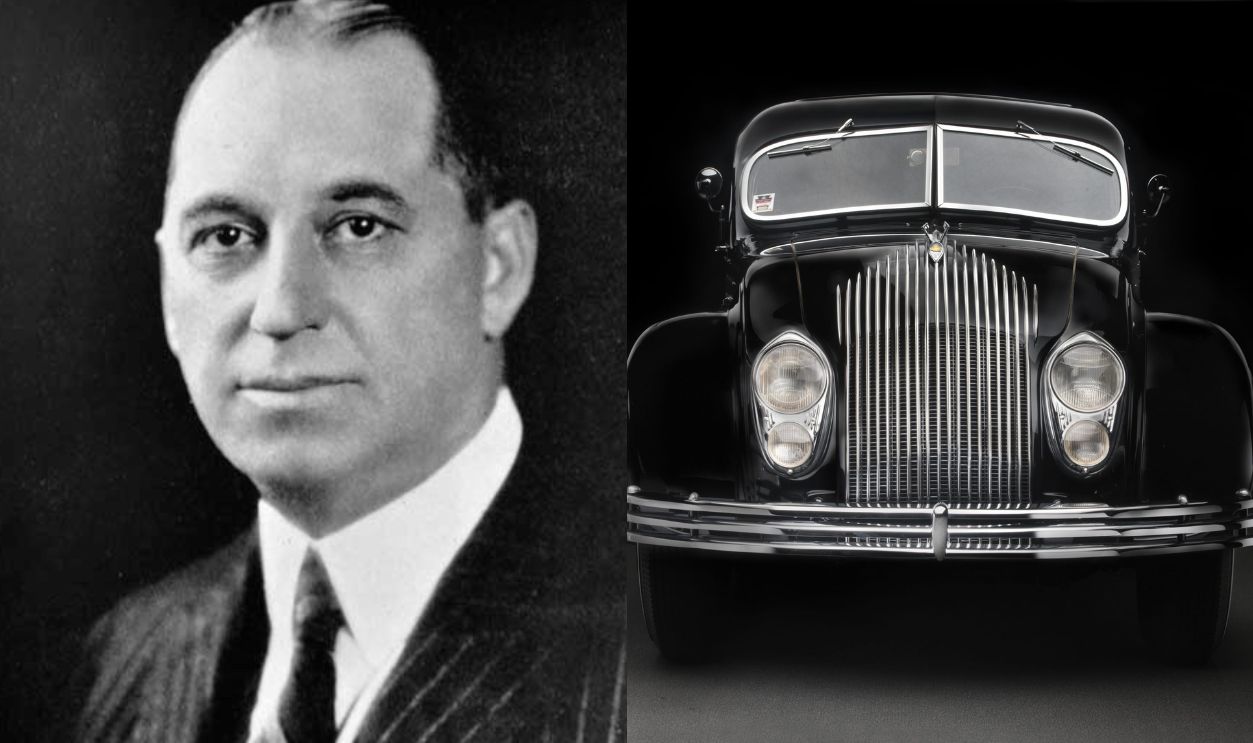
Cord 810/812 1936
Built by Cord Automobile, these cars combined luxury and new design. As one of the first American cars with front-wheel drive, the Cord 810 had great features, setting a high standard for quality and style that matched the fancy look of the time.
 sfoskett, CC BY-SA 3.0, Wikimedia Commons
sfoskett, CC BY-SA 3.0, Wikimedia Commons
Cord 810/812 1936 (Cont.)
With its unique ''coffin nose,'' the Cord 810/812 looked different because of its bold style. The regular front grille was replaced by smooth openings that curved around the front. Its hidden headlights, a new idea for that time, showed off the car's smooth shape. But that isn’t all.
Cord 810/812 1936 (Cont.)
As a leader, the Cord 810/812 had the first pop-up headlights and special front suspension in American cars. It had a strong 4.7L V8 engine and options to make it even faster, making it very attractive. Even though only 2,972 were made, it changed car design for many years
 Michael Barera, CC BY-SA 4.0, Wikimedia Commons
Michael Barera, CC BY-SA 4.0, Wikimedia Commons
Cord 810/812 1936 (Cont.)
It had a dashboard with a special finish, smart instruments, and good-quality materials inside. The unique hood that opened from the back and hidden hinges showed careful attention to detail, typical of Art Deco style. Famous in movies and books, the Cord is still an important symbol of the 1930s
 Cliff, CC BY 2.0, Wikimedia Commons
Cliff, CC BY 2.0, Wikimedia Commons
Auburn Speedster 1935
Auburn Speedster shows off the bold style of the Art Deco era. It combines luxury with a sporty look, especially with its eye-catching ''boattail'' shape. Designed by Gordon Buehrig, the Speedster 851 had a smooth, sleek body with a slanted radiator and visible exhaust pipes.
 LSDSL, CC BY-SA 3.0, Wikimedia Commons
LSDSL, CC BY-SA 3.0, Wikimedia Commons
Auburn Speedster 1935 (Cont.)
The Speedster 851 was known for both style and smart design. A powerful 4.6-liter engine with up to 150 horsepower showed Auburn's focus on speed. The special rear axle gave drivers two options: a fast gear for speed or an easy gear for smooth driving.
 Sicnag, CC BY 2.0, Wikimedia Commons
Sicnag, CC BY 2.0, Wikimedia Commons
Auburn Speedster 1935 (Cont.)
Fine craftsmanship made the Auburn Speedster a symbol of luxury. Its interior is very well designed, with high-quality materials that underline comfort and beauty. Each Speedster shows true luxury. With only 887 made in three groups, having an Auburn Speedster was a sign you belonged to the elite.
 Sicnag, CC BY 2.0, Wikimedia Commons
Sicnag, CC BY 2.0, Wikimedia Commons
Auburn Speedster 1935 (Cont.)
This car's value goes beyond its design and engineering. Actress Loretta Young drove an Auburn 851 Speedster in the 1937 movie Love Is News, adding to its fame as a classic American car. Its style influenced later models, like the 1963–1967 Chevrolet Corvette Stingray.
 https://en.wikipedia.org/wiki/Auburn_Speedster
https://en.wikipedia.org/wiki/Auburn_Speedster
Chrysler Airflow 1934
Made between 1934 and 1937, the Chrysler Airflow changed the car design with its smooth shape. It was the first American wind cruiser and only about 29,600 were built. Even with its rarity up, the early sales were down—only 10,839 units sold in the first year.
 Rex Gray, CC BY 2.0, Wikimedia Commons
Rex Gray, CC BY 2.0, Wikimedia Commons
Chrysler Airflow 1934 (Cont.)
Chrysler Airflow was made in one solid piece, making it light and strong. Engineers Carl Breer, Fred Zeder, and Owen Skelton worked on the design after many wind tests, with help from Orville Wright. By moving the engine to the front and balancing the weight, the Airflow gave a smoother ride.
 Greg Gjerdingen from Willmar, USA, CC BY 2.0, Wikimedia Commons
Greg Gjerdingen from Willmar, USA, CC BY 2.0, Wikimedia Commons
Chrysler Airflow 1934 (Cont.)
The Airflow also had a clean, stylish look. It had a front grill shaped like a waterfall, headlights that were partly hidden, and back wheels that were covered. Chrysler's new design added an elegant style to American cars. Its V-shaped front window and special body shape inspired many fancy cars that came later.
 Greg Gjerdingen from Willmar, USA, CC BY 2.0, Wikimedia Commons
Greg Gjerdingen from Willmar, USA, CC BY 2.0, Wikimedia Commons
Chrysler Airflow 1934 (Cont.)
Despite its new look, the Airflow didn't sell well because it looked unusual. Still, it became famous for its bold design and inspired other cars. Even without big sales, it made a strong impact and influenced cars like the Lincoln-Zephyr and later Chrysler models.
Bugatti Type 55 1932
The Bugatti Type 55 is a well-known car from the Art Deco time and for good reason. This beautiful roadster had a strong engine that output 130 horsepower. Its smooth shape had nice lines and a special design—a constant in the fancy show car era.
 Bugattist at Dutch Wikipedia, Wikimedia Commons
Bugattist at Dutch Wikipedia, Wikimedia Commons
Bugatti Type 55 1932 (Cont.)
The car's sleek, eight-spoke aluminum wheels give it an elegant, eye-catching appearance. And the absence of doors on some models adds a touch of sportiness. While some did note the car's interior was louder due to its racing heritage, many found that this just added to its character and driving experience.
 Alf van Beem, Wikimedia Commons
Alf van Beem, Wikimedia Commons
Bugatti Type 55 1932 (Cont.)
As a type of the racing Type 51 Grand Prix car, the Type 55 mixed racing speed with everyday comfort. Shown at the 1931 Paris Motor Show, it amazed car fans and became a symbol of luxurious speed. Even though few were made, its design was truly remarkable.
 Thesupermat, CC BY-SA 4.0, Wikimedia Commons
Thesupermat, CC BY-SA 4.0, Wikimedia Commons
Bugatti Type 55 1932 (Cont.)
And do you know who owns them? The rich, like the Duke of Tremoille, and this is because the Type 55 became a sign of wealth. Driving down the street was a show where people would admire its elegance. Its appeal lives on as a true Art Deco classic.
 Alf van Beem, Wikimedia Commons
Alf van Beem, Wikimedia Commons
Cadillac V-16 1930
Designed by Harley Earl, this Cadillac was made by hand, and this made it a rare choice during the tough times of the Great Depression. Only 4,076 of these cars were made over 10 years. And do you know what this costs? An arm, a leg, with some change (in millions).
Cadillac V-16 1930 (Cont.)
Fancy is even an understatement because the 1937 Cadillac V16 Hartman Cabriolet had a look inspired by European cars. Made for a rich man named Philippe Barraud from Switzerland, it stretched approximately 19 to 20 feet long with smooth, flowing lines, and a ride befitting royalty.
 Rex Gray, CC BY 2.0, Wikimedia Commons
Rex Gray, CC BY 2.0, Wikimedia Commons
Cadillac V-16 1930 (Cont.)
The 1934 Cadillac Series 452D came with new ''no draft" vents for better Airflow such that if you had your date with you, no more drafts blowing their hair all over. This beauty kept the stylish look of earlier models true to the past while adding new features to fit the modern mold.
 sv1ambo, CC BY 2.0, Wikimedia Commons
sv1ambo, CC BY 2.0, Wikimedia Commons
Cadillac V-16 1930 (Cont.)
Its last V-16 from Cadillac, the Series 90, came out from 1938 to 1940. This version had a smooth, almost silent 431-cubic-inch engine with a wide V-shape. You could now drive without the loud noise—suppose we can call it the silent, smooth operator.
 Tino Rossini from Toronto, Canada, CC BY 2.0, Wikimedia Commons
Tino Rossini from Toronto, Canada, CC BY 2.0, Wikimedia Commons
Delahaye 135 1937
Art Deco style grew strong in the 1920s and '30s, shaping many creative areas, including car design. Delahaye was right at the center of it all. This stunner was a big step in pushing the Delahaye brand into sportier models with smooth lines and smart engineering.
 Edvvc from London, UK, CC BY 2.0, via Wikimedia Commons
Edvvc from London, UK, CC BY 2.0, via Wikimedia Commons
Delahaye 135 1937 (Cont.)
A strong front grille and simple, spoked wheels were noticeable from afar. Inside? It had soft, fine materials that were a result of top-notch skills of French makers who specifically gave their all into this creation. More than a car, the 135 feels like art on wheels.
 Kévin Pourtout, CC BY-SA 3.0, Wikimedia Commons
Kévin Pourtout, CC BY-SA 3.0, Wikimedia Commons
Delahaye 135 1937 (Cont.)
Besides its beauty pageant status, it still participated in big races like the Alpine Rally and the Le Mans 24-hour race, showcasing Delahaye's larger engine of about 3.6 liters (3557 cc). This model didn't just race but also won, winning the hearts of car fans. Beauty and speed.
 State Library of New South Wales, Wikimedia Commons
State Library of New South Wales, Wikimedia Commons
Lincoln K Series 1931
Lincoln's K Series had a strong 384.8 cubic inch (6.3 L) L-head V8 engine that produced 120 horsepower, and this made the car work better. The wheelbase was a smooth 145-inch. The car's shiny chrome parts and smooth shapes was the evidence that art and engineering could co-exist.
 MPW57, CC BY 3.0, Wikimedia Commons
MPW57, CC BY 3.0, Wikimedia Commons
Lincoln K Series 1931 (Cont.)
Over the years, different builders changed the plain frames into fancy cars. The insides were also constantly upgraded with nice materials and careful stitching true to the Art Deco era. Personalization was also a huge deal with the K series—each car was made just for its owner.
 Niels de Wit from Lunteren, The Netherlands, CC BY 2.0, Wikimedia Commons
Niels de Wit from Lunteren, The Netherlands, CC BY 2.0, Wikimedia Commons
Lincoln K Series 1931 (Cont.)
Lincoln was in the same race, competing with famous brands like Cadillac and Duesenberg, yet it always had a seat at the table. A key moment was when America’s own President Franklin D. Roosevelt used a changed version of his "Sunshine Special". What a day!
 Brody Levesque, CC BY-SA 4.0, via Wikimedia Commons
Brody Levesque, CC BY-SA 4.0, via Wikimedia Commons
Packard Twelve 1934
Seen as a sign of wealth, the Packard Twelve 1934 set the standard for elegance in car history. It was so elegant that even Louise Arner Boyd—an American explorer—couldn’t resist its charm. The special body designs from famous builders like Dietrich didn’t disappoint at all. The reason?
 Craig Howell from San Carlos, CA, USA, CC BY 2.0, Wikimedia Commons
Craig Howell from San Carlos, CA, USA, CC BY 2.0, Wikimedia Commons
Packard Twelve 1934 (Cont.)
It had a powerful V12 engine with a size of 445.5 cubic inches (7.3 L), giving it 160 horsepower. This powerful engine made the car popular with luxury car fans. Later models in the late 1930s had even bigger engines, like a 473.3 cubic inch (7.8 L) version.
 ultimatecarpage.com, CC BY-SA 4.0, Wikimedia Commons
ultimatecarpage.com, CC BY-SA 4.0, Wikimedia Commons
Packard Twelve 1934 (Cont.)
In 1937, the car got hydraulic brakes, further enhancing its appeal. Its smooth look and nice materials mainly appealed to the elite, who really cared about what they arrived in at the exclusive Hollywood bowls they attended. This ride really did set the standards higher in the genre.
 Buch-t, CC BY-SA 3.0 DE, Wikimedia Commons
Buch-t, CC BY-SA 3.0 DE, Wikimedia Commons
Packed Twelve 1934 (Cont.)
To just see how high these standards were, once, Franklin D. Roosevelt gave Joseph Stalin a special armored version of the car. Remember the explorer Louise Arner Boyd? She also constantly took her Packed Twelve in some of her adventures. This is a car with quite a story.
 Smiroje.,and Rex Gray, CC BY 2.0, Wikimedia Commons
Smiroje.,and Rex Gray, CC BY 2.0, Wikimedia Commons
Mercedes-Benz 540K 1936
Designed by Friedrich Geiger, this Art Deco beauty featured a 5.4-liter straight-8 engine and an elegant look that captured Hollywood's attention. Jack L. Warner, one the Warner Bros. founders, owned 540K. He wasn’t the only one mesmerized. Pierre Franchi and Maria Leyder also did own it.
Mercedes-Benz 540K 1936 (Cont.)
Besides its fancy exterior, the 540K had new technology that was way ahead of its time. The 5.4-liter straight-8 engine, helped by a Roots supercharger, gave strong power, reaching a top speed of 105 mph. The lightweight design used oval-shaped tubes inspired by Mercedes-Benz's racing cars.
 AlfvanBeem, CC0, Wikimedia Commons
AlfvanBeem, CC0, Wikimedia Commons
Mercedes-Benz 540K 1936 (Cont.)
Every Mercedes-Benz 540K was art and a blend of engineering at its best. Yet again, they upheld customization, including the best craftsmen at the Sindelfingen factory, to create masterpieces for their owners. And boy, did they deliver—nice cabriolets, fancy limousines, and, of course, personal touches.
 Fiandro, CC BY-SA 4.0, Wikimedia Commons
Fiandro, CC BY-SA 4.0, Wikimedia Commons
Pierce Silver Arrow 1933
The Pierce Silver Arrow 1933 was a Phillip O. Wright creation, and it first debuted at the New York Auto Show. Its rarity is in the skies with only five of these cars being made. They all looked great and worked really well. And it could move, too.
 James Emery, CC BY 2.0, Wikimedia Commons
James Emery, CC BY 2.0, Wikimedia Commons
Pierce Silver Arrow 1933 (Cont.)
The V-12 engine under the hood could go as fast as 115 mph. Then its sharply slanted grille and smooth body give the feeling of speed even when parked. Special features include spare wheels hidden away in the design. The exterior was a mix of shiny chrome and fancy finishes.
 Brian Sims, CC BY 2.0, Wikimedia Commons
Brian Sims, CC BY 2.0, Wikimedia Commons
Pierce Silver Arrow 1933 (Cont.)
Today, only three Pierce Silver Arrows are left, but they are still very valuable. And whoever got to sit or drive one really did feel special. But the stars were the ones who owned them. The likes of F. Robert Greene and James Brucker Sr. Too bad they aren’t here to narrate it.
 Nativeborncal, Wikimedia Commons
Nativeborncal, Wikimedia Commons
Duesenberg Model J 1928
With 481 cars of this model ever made, including the supercharged SJ and the rare SSJ, the Duesenberg Model J 1928 was Gordon Buehrig’s creation. This large luxury car had its engine in the front, run on the back wheels, and had custom designs made for the owner.
 Rex Gray, CC BY 2.0, Wikimedia Commons
Rex Gray, CC BY 2.0, Wikimedia Commons
Duesenberg Model J 1928 (Cont.)
A powerful 6.9 L Straight-8 engine was the reason the Model J output 265 horsepower, and it could go up to 320 horsepower with a supercharger. Any speedster would have loved it because, during that era, it could reach a speed of 116 mph.
 Mr.choppers, CC BY-SA 3.0, Wikimedia Commons
Mr.choppers, CC BY-SA 3.0, Wikimedia Commons
Duesenberg Model J 1928 (Cont.)
Like other exclusive Art Deco rides, each Duesenberg Model J was customized to the owner’s wants. So whatever left the factory was unique with fancy interiors that had modern additions like oil change, battery, and engine check lights. Prices ranged from $14,000 to more than $25,000.
 Mr.choppers, CC BY-SA 3.0, Wikimedia Commons
Mr.choppers, CC BY-SA 3.0, Wikimedia Commons
Duesenberg Model J 1928 (Cont.)
The Model J was among the best, giving European high end brands like Rolls-Royce a run for their money. The creators revolutionized how cars were made in the 1920s and 1930s. Today, Duesenbergs are very popular with collectors and are part of classic car events.
 Thomas Vogt from Paderborn, Deutschland, CC BY 2.0, Wikimedia Commons
Thomas Vogt from Paderborn, Deutschland, CC BY 2.0, Wikimedia Commons
Alfa Romeo 8C 1931
The 8C is one of the most famous cars ever made, created by a well-known designer named Vittorio Jano. It had a straight-8 engine and this made it great for racing. Important types like the 8C 2300 were known for being really good, with the 8C 2600 and 8C 2900 produced later in the late 1930s to early 1940s.
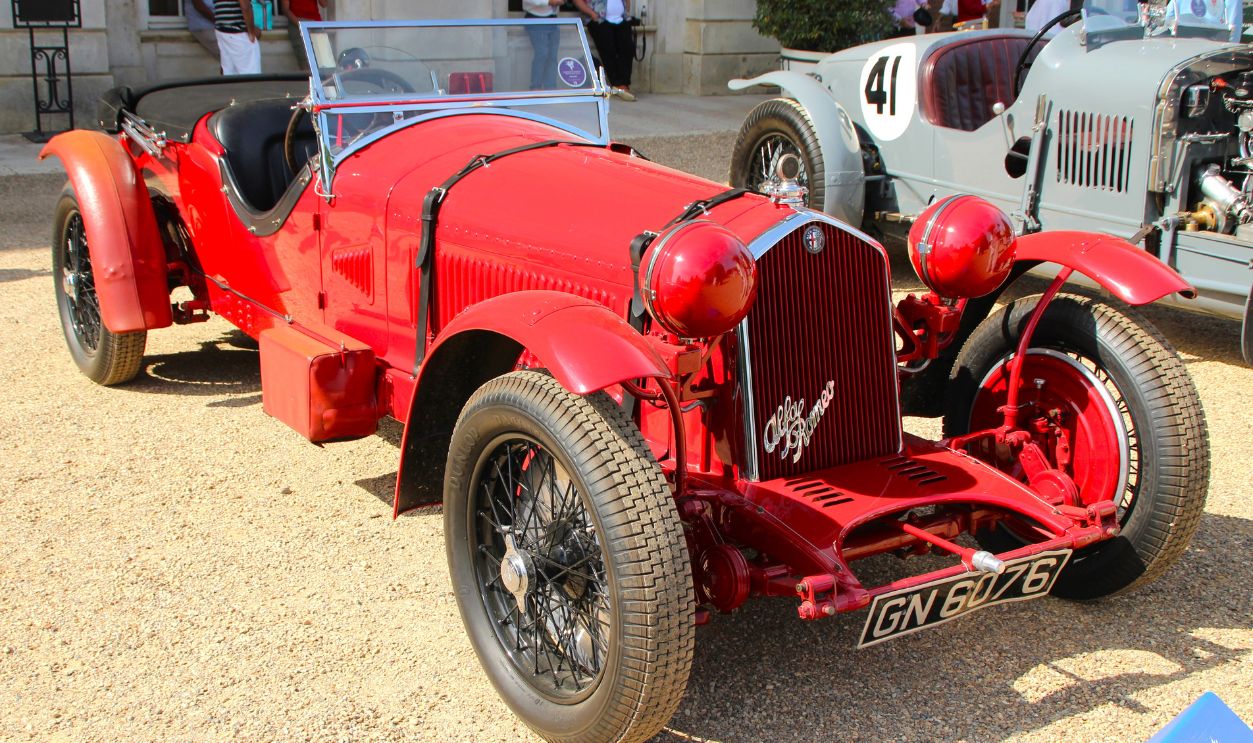 MrWalkr, CC BY-SA 4.0, Wikimedia Commons
MrWalkr, CC BY-SA 4.0, Wikimedia Commons
Alfa Romeo 8C 1931 (Cont.)
The Alfa Romeo 8C 2300 had a great racing track record, notably winning the well-known 24 Hours of Le Mans four times in a row from 1931 to 1934. This did prove to the automotive makers just how tough the car was in long races. Its powerful engines and lightweight helped it win such races.
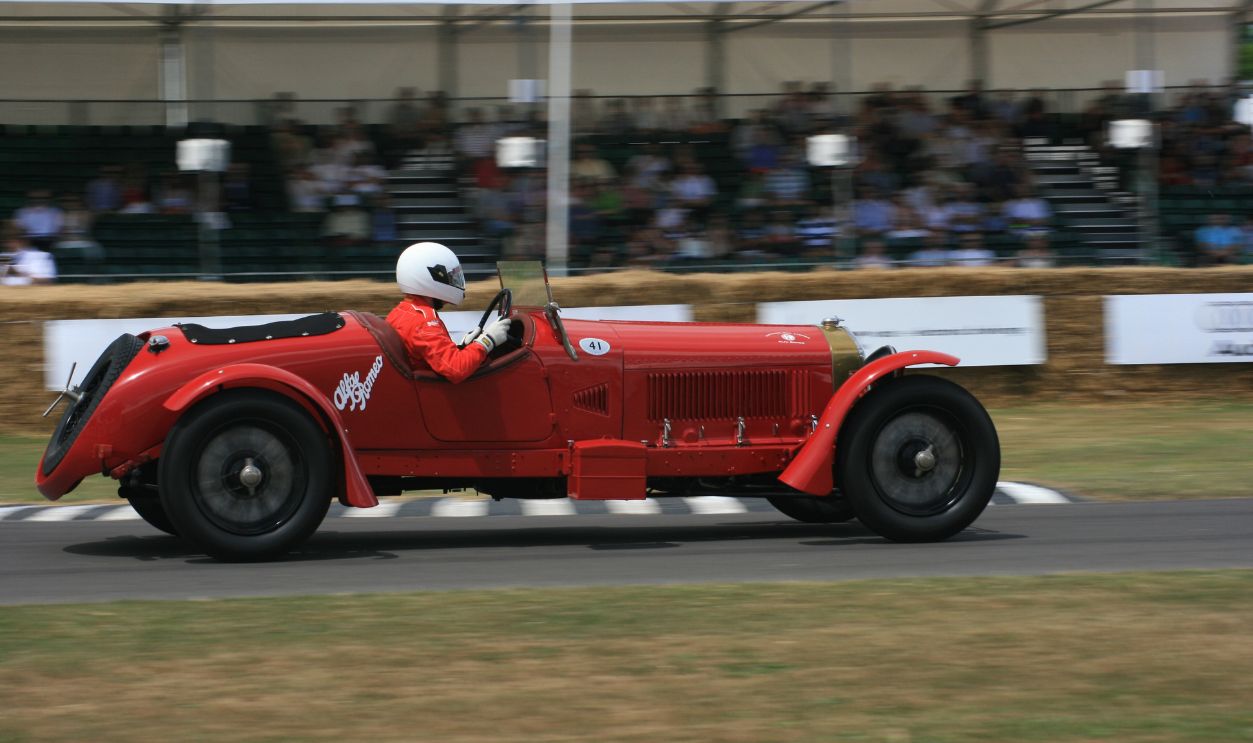 ian mcwilliams, CC BY 2.0, Wikimedia Commons
ian mcwilliams, CC BY 2.0, Wikimedia Commons
Alfa Romeo 8C 1931 (Cont.)
Some models had two overhead cams and a strong supercharged engine, giving it a lot of power for its time. Its box-shaped frame and special suspension helped it handle well and it also made the vehicle stable and easy to control at high speeds. Italian builders like Zagato and Touring created its beautiful body shapes.
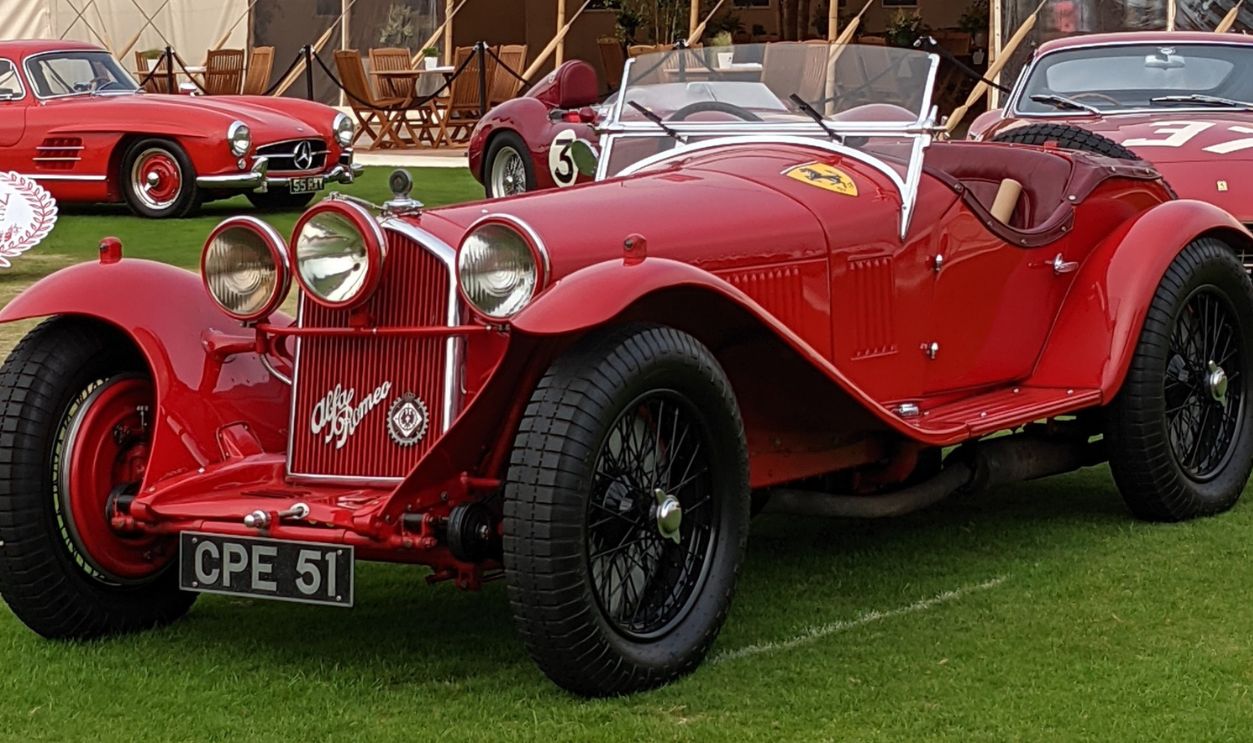 Calreyn88, CC BY-SA 4.0, Wikimedia Commons
Calreyn88, CC BY-SA 4.0, Wikimedia Commons
Alfa Romeo 8C 1931 (Cont.)
The Alfa Romeo 8C was at the very top of Art Deco with its streamlined elegance, blending flowing lines and geometric details like its iconic grille. Its leather and polished wood finishes enhanced its refined interior. Finally, its meticulous craftsmanship represented the sophistication and glamour central to Art Deco design.
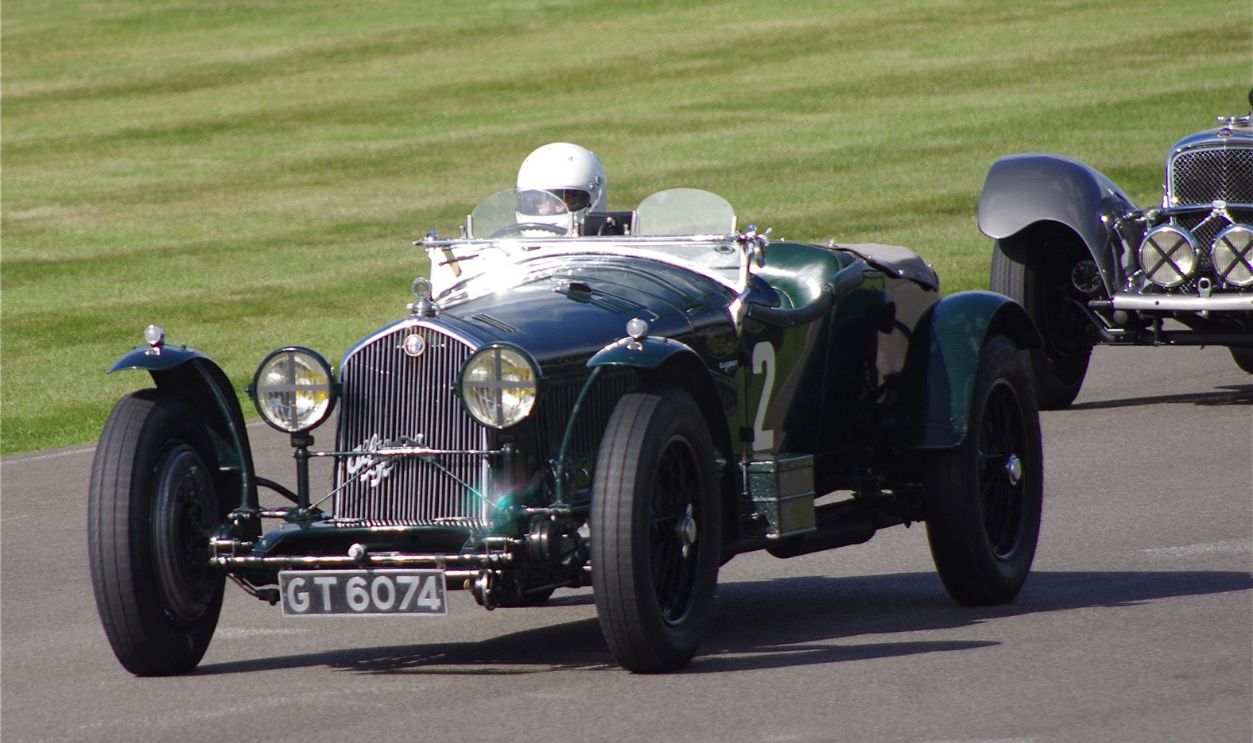 Keanan from Orlando, United States, CC BY 2.0, Wikimedia Commons
Keanan from Orlando, United States, CC BY 2.0, Wikimedia Commons

